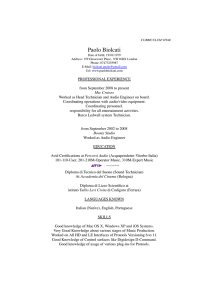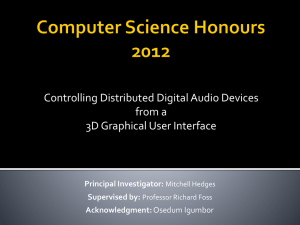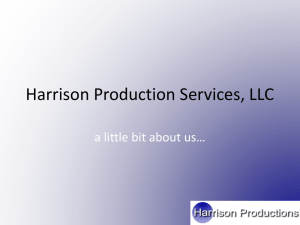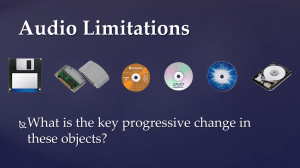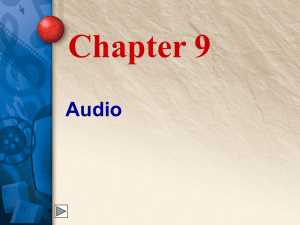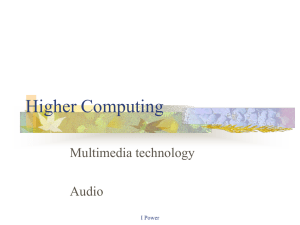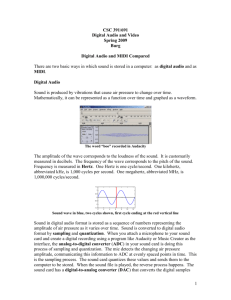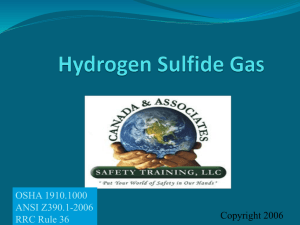SMPTE Time Code
advertisement
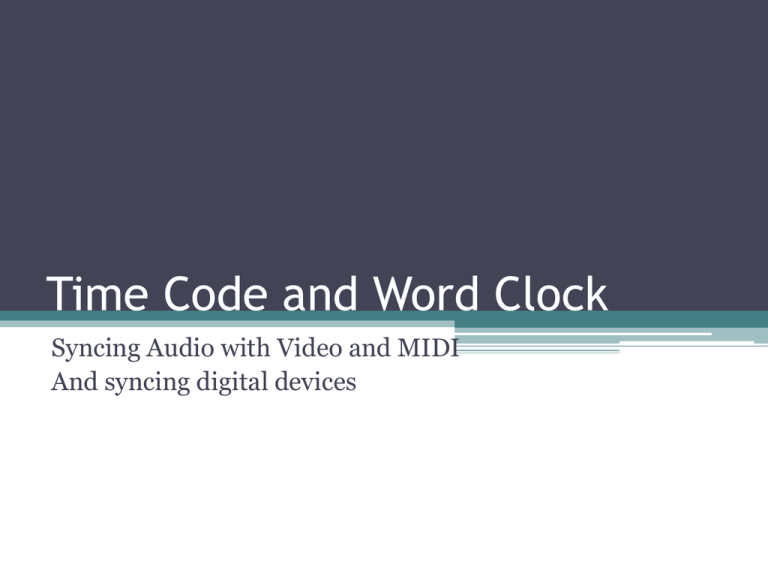
Time Code and Word Clock Syncing Audio with Video and MIDI And syncing digital devices What is Time Code? • It is a way of SYNCRONIZATION • It allows different kinds of devices to communicate and sync together • This can be useful with: ▫ Audio for Video ▫ MIDI systems ▫ Various digital devices SMPTE Time Code • When audio is added to video, they need a way to be perfectly in SYNC • VIDEO is made up of individual frames • DIGITAL AUDIO is made up of SAMPLES What is SMPTE? • The Society of Motion Picture and Television Engineers • They decided on a UNIVERSAL standard. Frame Rates • The time codes depend on the frame rate of the video • It is usually one of the following: ▫ ▫ ▫ ▫ 24 FPS (Common for film) 25 FPS (PAL European format) 29.97 FPS (NTSC American) 30 FPS (HDTV) Audio/Video Communication • The audio and video streams are generally produces from different devices • Using a universal SMPTE format allows for the audio to stay perfectly in place with the frames • For example: ▫ Take 24 video FPS and 48k audio ▫ That’s 2,000 audio samples for every frame of video! Telecine and 3:2 Pulldown • TELECINE is the process of converting motion picture film to a video format • 3:2 pulldown makes 24 FPS film look proper on a TV broadcasting NTSC 29.97 FPS. • Luckily, audio is not affected by this process MIDI Time Code (MTC) • Remember that MIDI is simply data information • MTC is simply another form of syncing audio and video • These are called ‘Quarter-frame’ messages Word Clock • Word Clock is DIFFERENT than timecode • It is for syncing digital devices to avoid data errors • This can also be useful with: ▫ Tape machines ▫ CD Players ▫ Multiple digital devices Master Word Clock • These devices are used to sync it all perfectly ▫ ▫ ▫ ▫ Antelope Drawmer Lucid Digidesign Jitter • Jitter is distortion of high-frequency signal • It is caused during transmission between digital devices • This is often caused by clock errors and can be avoided by: ▫ Using a Master Word Clock ▫ Using quality A/D converters with Jitter reduction ▫ Jitter reduction built in to digital units Syncing in the modern studio • Syncing is often now done “In the Box” • Software is designed to sync internally • Modern digital devices have technology to sync properly and avoid jitter Surround Sound • Most common format is 5.1 • 7.1 is also supported on Blu-Ray • The ‘.1’ refers to the LFE channel (LowFrequency emmissions) • Generally, this is a crossover for the subwoofer, incorporated by the engineers Uncompressed Audio for Video • PCM: Pulse Code Modulation • This is a completely uncompressed file, just like we would save from Pro Tools • Blu-Ray TrueHD: Linear PCM 8 Channels fully uncompressed! Wow. DTS and Dolby Digital • Support surround sound, but are compressed audio formats • They are considered a ‘CODEC’ almost always found on DVD discs • About 640 kbps compression rate Some Other Formats • DVD Audio ▫ Up to 192k stereo, 96k full surround ▫ 24-bit audio • SACD ▫ Sampling rate up to 2822 khz! (CD is 44.1) ▫ 120dB Dynamic Range (CD is 96) ▫ Nearly 8GB capacity



